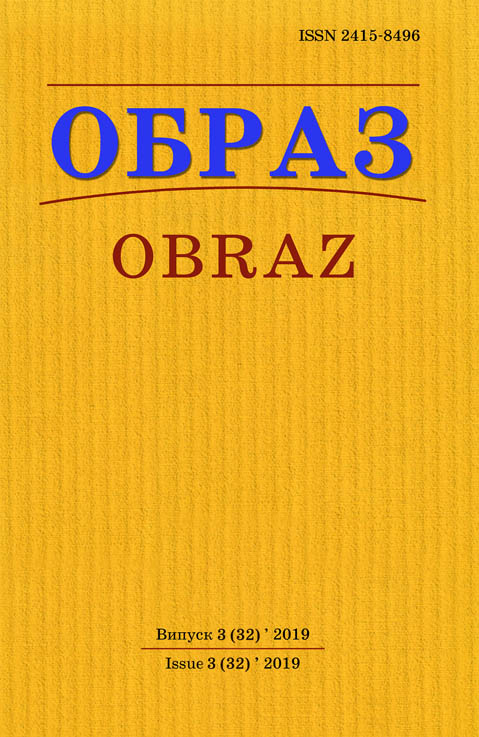Abstract
Introduction. Media researchers are still worried about the quality of journalism, the presence or absence of quality journalistic texts. It can be argued that the problem of the quality of journalism in various aspects seems to have won a central place in academic debate. Topicality. Goal. Media researchers are still worried about the quality of journalism, the presence or absence of quality journalistic texts. It can be argued that the problem of the quality of journalism in its various aspects seems to have won a central place in academic debate. The purpose of the article is to determine whether there is a relationship between the two phenomena mentioned above. The object of the article is conservative media. The subject of the article is media frames within which conservative media operate. Research methods are based on a combination of general scientific methods of studying the specificity of analysis of social and communication phenomena. The analytical-synthetic method and the method of determining the specific segmentation of the targeted delineated content were used. Results. Under the journalistic frame, we understand some media coverage of a problem in such a way that should facilitate a certain interpretation of what actually happened, with an emphasis on specific details and nuances. In this sense, the goal of conservatives is to determine whether the media frameworks in which journalistic content was delivered and which dominated dispute resolution are those characteristics that distinguish collective action from those social movements that are commonly used to digitalize society. In this case, it is a question of whether conservative journalistic discourse in general assumes the form and essence of digitalizing discourse in favor of the rejection of rhetoric, which defends the objection of conscience as a form of protest. Conclusions and Prospects. There is a component of justice; its inclusion in the general discourse of discussions is a key factor in building content that promotes social digitalizers. In the context of conservative content, this element is particularly evident through three features: the inclusion of a lexicon used by the authors on the topic of discussion; own discourse of conservative media; the dissemination by conservative media of such arguments made by the public that indicate complaints about education reform.
References
1. Verbytskyj P. Fragmentacija kontentu jak chynnyk vplyvu na audytoriyu // Derzhava ta region. Serija Social’ni komunikaciji. Zaporizzha. 2017, № 4 (32). S. 78-81.
2. Gajdur N. Diahronnyi analiz fukcijnal’noji systemy zasobiv masovoji informaciji // Zbirnyk prac’ Naukovo-doslidnogo instytutu prespznavstva. Vyp. 8 (26). L’viv, 2018. S. 170-179.
3. Gorohovs’kyji O.M. Faktchek jak trend rozsliduvan’: mozhlyvosti ta perspektyvy: praktychnyji posibnyk. – Dnipro: LIRA, 2017. – 133 s.
4. Zolyak V. Suspil’ne znachennya kontentnoji konvergenciji zasobiv masovoji komunicaciji // Dialog. Mediastudiji : zb. nauk. prac» / Odes’kyji nac. un-t im. I. Mechnikova, 2009. – Vyp. 8. – S. 120-128.
5. Komova M.V. Snerpretacijna pryroda komunikacijnoji vzaemodiji audytoriyu // Derzhava ta region. Serija Social’ni komunikaciji. Zaporizzha. 2017, № 1 (29). S. 28-32.
6. Luman N. Real’nist’ mas-media. – K.: CVP, 2010. – 158 s.
7. Rol’ zasobiv masovoji informaciji [Elektronnyij resurs]. – Rezhym dostupu: https://www. coe.int/uk/web/compass/media.
8. Synorub G.P. Ponyattya konfliktnogo napovnennja dijal’nosti mas-media v teoriji social’nych komunikacij (kontekst formuvannja povedinky audytoriji) : avtoref. dys. kand. nauk iz social’nych komunikaciji: 27.00.01 – Kyiv: B.v., 2009. – 16 s.
9. Entman, R. M. (2007). Framing Bias: Media in the Distribution of Power. Journal of Communication, P. 163-173.
10. Gamson, W. A. (1988). Political Discourse and Collective Action. From Structure to Action: Social Movement Participation across Cultures. Greenwich, CT: JAI Press. Р. 219–244.
11. Gamson, W. A. (1992). Talking Politics. New York: Cambridge University Press
12. Gitlin, T. (1980). The Whole World Is Watching: Mass Media in the Making & Unmaking of the New Left. Berkeley y Los Angeles: University of California Press.
13. Lippmann, Walter ([1922] 1965) Public Opinion. New York: Free Press, 1997. 288 р.
14. Lofland, J. (1996). Social Movement Organizations: Guide to Research on Insurgent Realities. New York: Aldine de Gruyter.
15. Milburn, M. A. y McGrail, A. B. (1992). The Dramatic Presentation of News and its Effects on Cognitive Complexity. Political Psychology, 13 (4), 613-632.
16. Miller, M. M., Riechert, B. P. (2003/2001). The Spiral of Opportunity and Frame Resonance: Mapping the Issue Cycle in News and Public Discourse Framing Public Life: Perspectives on Media and Our Understanding of the Social World (pp. 107-121). Mahwah: Lawrence Erlbaum Associates, с. 112
17. Milne, K. (2005). Manufacturing Dissent: Single-issue Protest, the Public and the Press. London: Demos.
18. Mott Frank Luther. The News in America. Cambridge, Harvard University Press.1952. 433 р.
19. Richardson, J. E. (2007). Analysing Newspapers: An Approach from Critical Discourse Analysis. New York: Palgrave Macmillan, с. 116
20. Snow, D. A. y Benford, R. D. (1988). Ideology, Frame Resonance and Participant Mobilization. International Social Movement Research, 1, 197-217.
21. The Method of Freedom. New York: The Macmillan Company, 1934, с. 10.

This work is licensed under a Creative Commons Attribution 4.0 International License.

